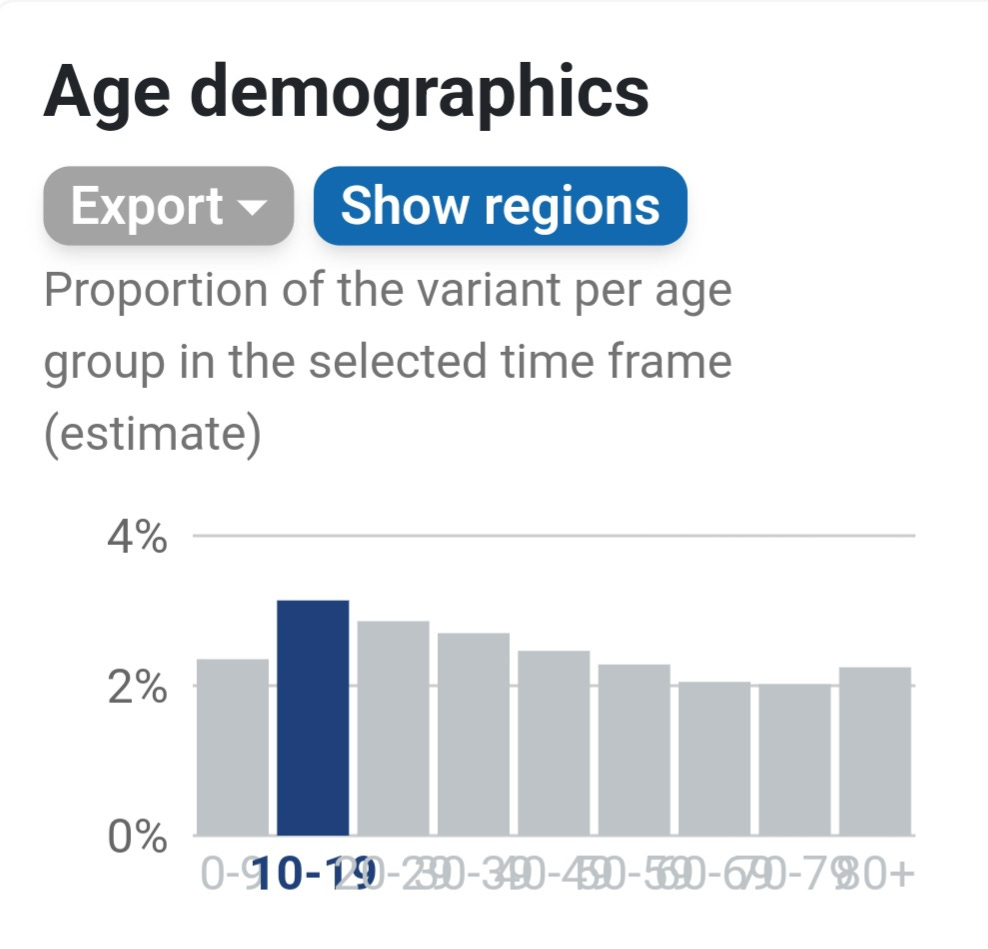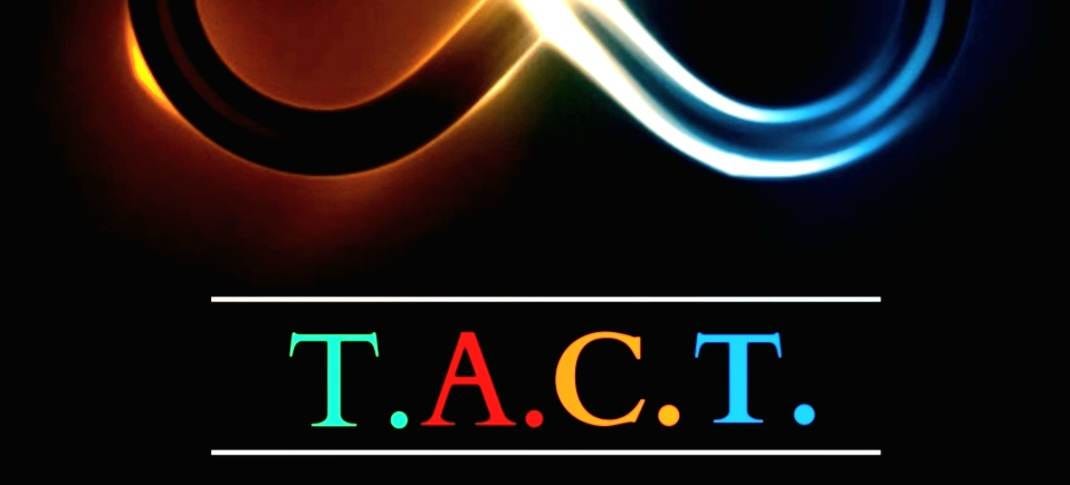COVID Update: March 11, 2023 ; Will COVID Find the Combination to Reach Further Beyond the Immune System’s Defenses? John Hopkins COVID Center and the ONS, COVID Infection Survey End.
A new variant moves to the top of TACT’s variant watch list.
Australia, Japan, the U.K., and Canada each had more people hospitalized with COVID in early March 2023 than in March 2021. Every year, cases and hospitalizations decline in February and into March, and every year, government leaders in most countries and the major news outlets claim that the pandemic is over. Every year, millions of people believe this false narrative. Now is NOT the time to let our guard down.
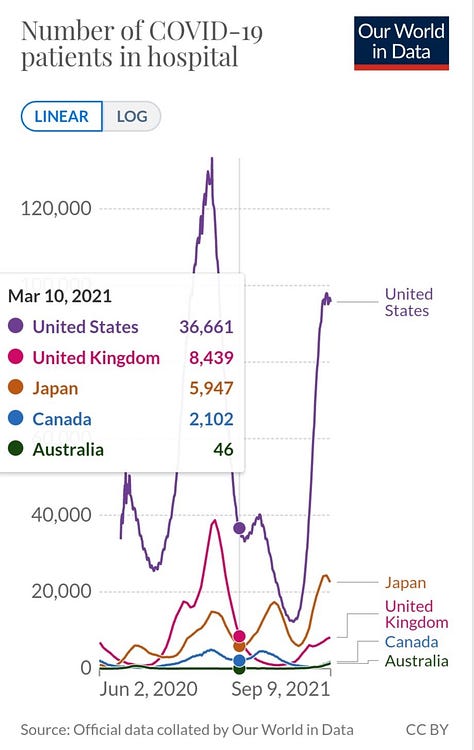
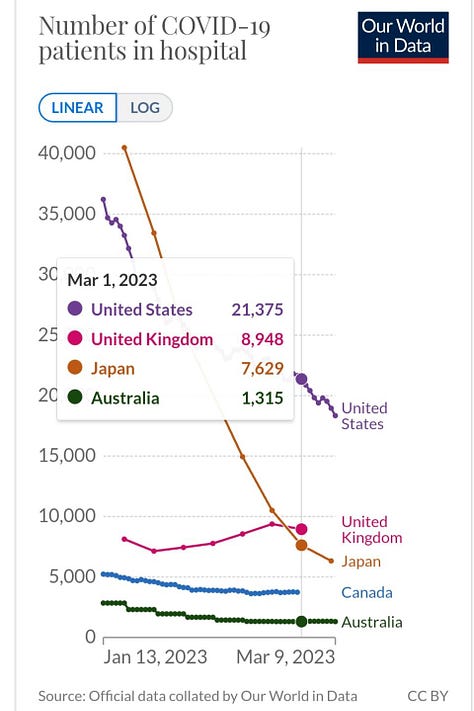
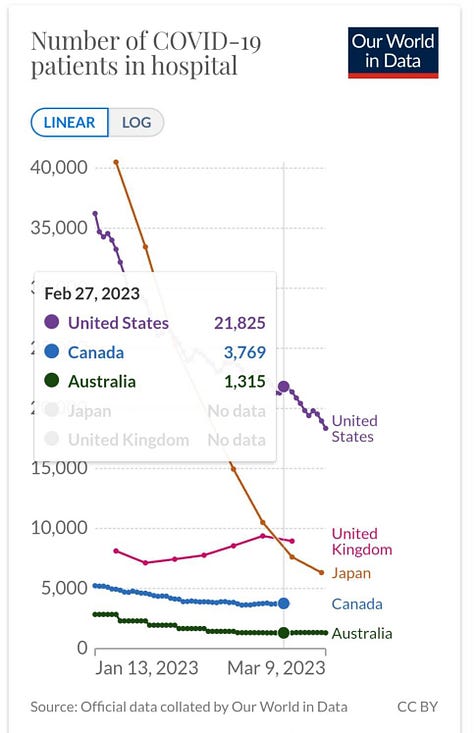
Note: Canada’s last update was on February 27th
Funding of Important Data Sources is Ending
Now is NOT the time to let our guard down, yet we are seeing the dismantling of some of the best sources of data because they aren’t being funded. The COVID Infection Survey, in the U.K., is a weekly survey published by the Office for National Statistics. It began in April 2020 and has been important in spotting new variants, reporting the prevalence of COVID in the community, and providing details on Long COVID. According to a press release on March 9th, it is being paused on March 31st, for several months, but it has failed to receive funding, so its future is not looking good.
The Coronavirus Resource Center at Johns Hopkins University in the United States stopped collecting and reporting COVID data on Friday, March 10, 2023. They say they launched the site “to meet an urgent need when governments lacked the capacity to mount comprehensive, real-time public health surveillance and reporting.” There is still an urgent need for this data.
According to an article on the JHU website, they say that they are “confident that the public and policymakers will have ongoing access to trustworthy COVID-19 data and guidance from U.S. agencies.” However, they also say, “The hospitalization data collected and reported by the U.S. Department of Health and Human Services is now the most reliable and complete data remaining for use in public health decisions and policymaking.” “This is valuable, but insufficient to fully track and understand the pandemic; we are concerned about the persistent, across-the-board declines in the quality and availability of COVID-19 data."
Which is it? They seem to have simply lost the funding to continue, much like in the U.K.
Will COVID Find the Combination to Reach Further Beyond the Immune System’s Defenses?
XBB.1.5 evades antibodies from prior infections and vaccines. It has defeated all the available monoclonal antibody treatments. It can suppress the immune system for weeks or months by infecting the cells of the immune system.
XBB.1.5 and its sub-variants are taking full advantage of our indifference and coming up with hundreds of new mutation combinations that are occurring more and more often in the body of the virus. T-cells have been keeping most younger adults and children safe from the worst of a COVID infection’s initial and long-term damage. This virus is searching for better ways to suppress or attack the immune response. There is a very real possibility that COVID will eventually find the right combination to unlock the last layers of defense.
It is more important than ever to maintain or build upon the resources we have, not to dismantle them. We know that COVID continues to kill thousands of people every week, and the 10’s of thousands who are not able to carry on with work become disabled, either temporarily for a few months or for years, and likely for life in many cases. Ignoring the problem will only make it worse. The virus is actively working on defeating treatments and our immune system. We aren’t actively mitigating transmission or developing any vaccines that can stop it. As long as it can keep infecting new people and we aren’t making serious efforts to curb transmission, then this virus will continue to have the evolutionary advantage. It will continue to evolve around new vaccines or treatments within a year or so of our using them.
EK.2 (XBB.1.5.13.2)
A new variant moves to the top of TACT’s variant watch list.
EK.2 has a 59% growth advantage over XBB.1.5 as of March 10th.
The degree of confidence that this won’t decline below a 40% advantage is fairly high, putting it in a stronger position. We still don’t know how this will change the overall situation, if at all, but like mentioned above, it is likely only a matter of time before it finds a path that puts more people in greater danger. At the moment, EK.2 has a clear advantage over XBB.1.5. Since XBB.1.5 has already done a good job of avoiding antibodies, the next step for EK.2 or other new variants is to get better at suppressing the immune response, replicating faster, or binding to cells better. None of these are good, putting more people at greater risk.

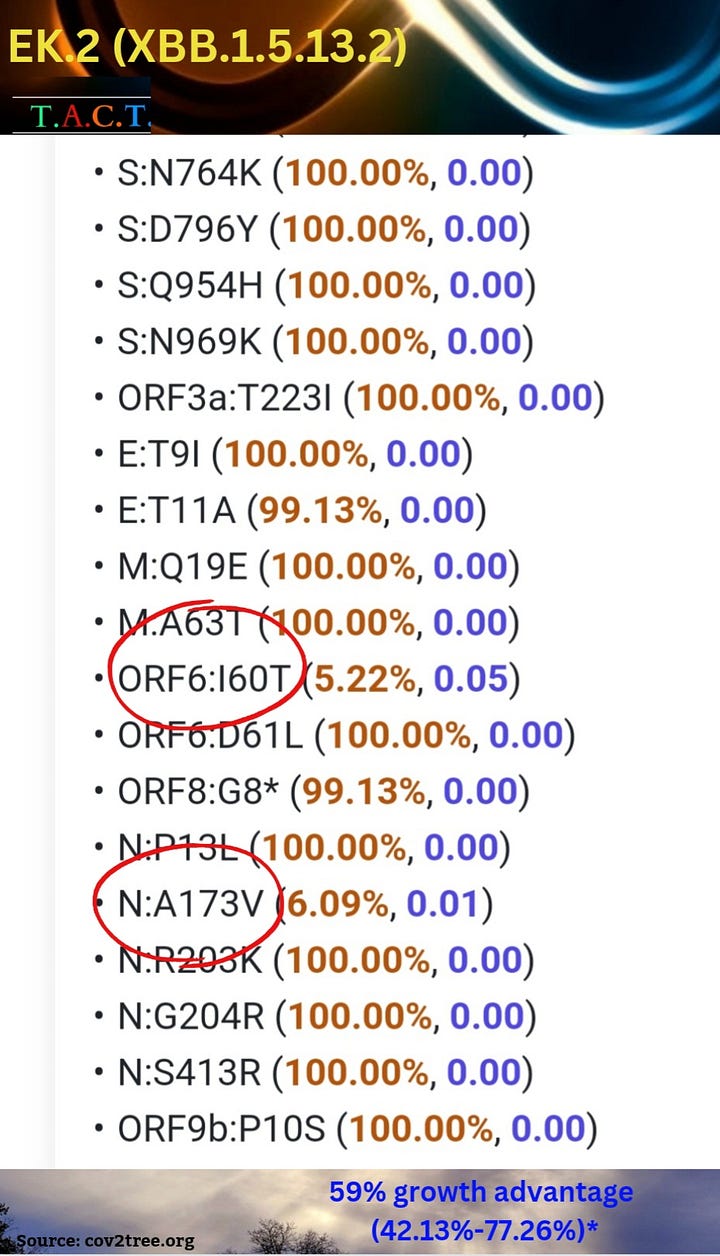
The changes occurring in the N protein tend to affect interactions with T cells. Therefore, if it makes mutations in the N protein and has gained a greater advantage, odds are that it is further suppressing T-cells, our final layer of defense. That could make the chances of long-term persistence and/or all the other problems with inflammation and infection of organs worse, causing more people to become unable to work. More people will die years or decades younger than they otherwise would have.
EK.2 (XBB.1.5.13.1) is rapidly spreading across the United States and likely in many countries around the world already.
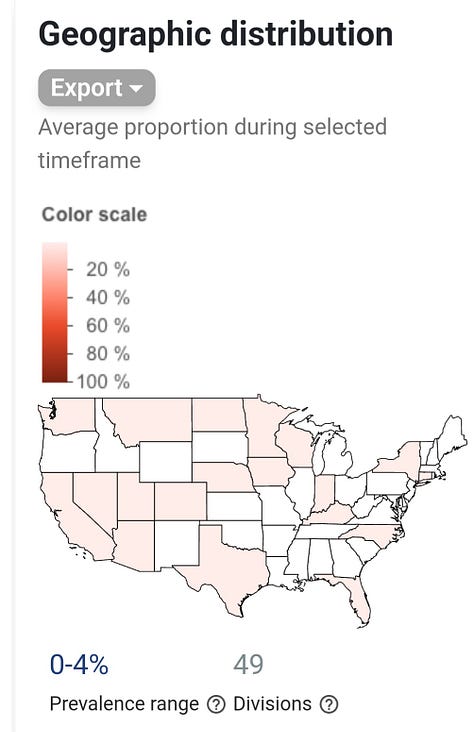
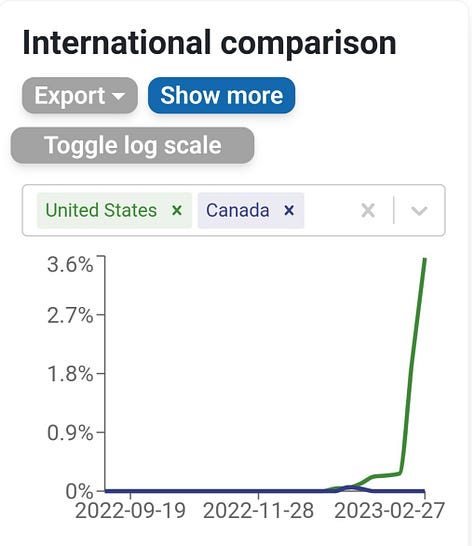
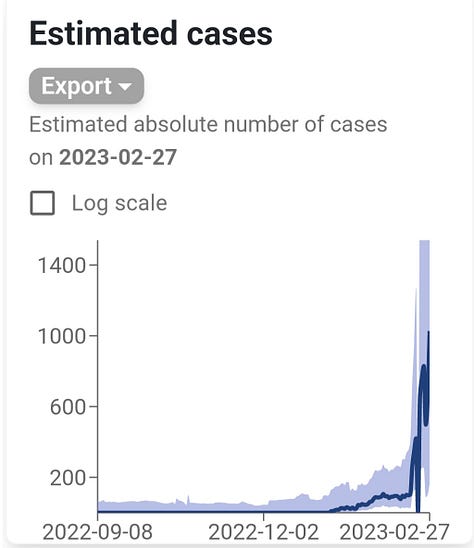
For more information on variants, see the variant update.
School-age children continue to be re-infected more than other age groups. The graph below incorporates all the XBB variants in circulation.
Why isn’t the primary focus of our efforts on designing and installing new HVAC systems in schools that can eliminate 99% of pathogens and bring in enough fresh air to maintain CO2 levels below 600 ppm? This is necessary to protect children and our communities.
COVID May Be Causing Irreversible Damage to Children’s Immune Systems
This damage could cost children and adults decades of their lives, reducing the quality of life at a much earlier age.
In the U.S., over 75% of the country is experiencing Substantial or High Transmission, according to the CDC.
Here are a few studies to think about if you find yourself considering whether you should wear an N-95 or similar mask.
COVID’s Impact on Immunological Dysfunction and Male Reproduction
Depletion and Dysfunction of Dendritic Cells: Understanding SARS-CoV-2 Infection"
"Impaired function and reduced numbers of DCs are a catastrophe for the immune system"
"The deficiency and dysfunction of DCs persist for several months"
https://www.ncbi.nlm.nih.gov/pmc/articles/PMC8898834/"Dendritic cell deficiencies persist seven months after SARS-CoV-2 infection" July 2021
https://www.nature.com/articles/s41423-021-00728-2Long-term perturbation of the peripheral immune system months after SARS-CoV-2 infection
"Even those who had mild COVID-19, can suffer from persistent symptoms for many months after infection, a condition referred to as “long COVID”
"RNA sequencing revealed significant perturbations to gene expression in COVID-19 convalescents until at least 6 months post-infection."
https://bmcmedicine.biomedcentral.com/articles/10.1186/s12916-021-02228-6Repeat COVID-19 infections increase risk of organ failure, death
https://medicine.wustl.edu/news/repeat-covid-19-infections-increase-risk-of-organ-failure-death/Men's reproductive ability is potentially jeopardized by COVID
Healthy young men who fathered at least one child prior to COVID
"The significant alteration of reproductive function at the molecular level and identifies several dysregulated proteins and pathways associated with the reproductive process."
https://www.ncbi.nlm.nih.gov/pmc/articles/PMC8928495/







